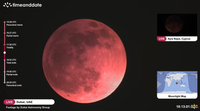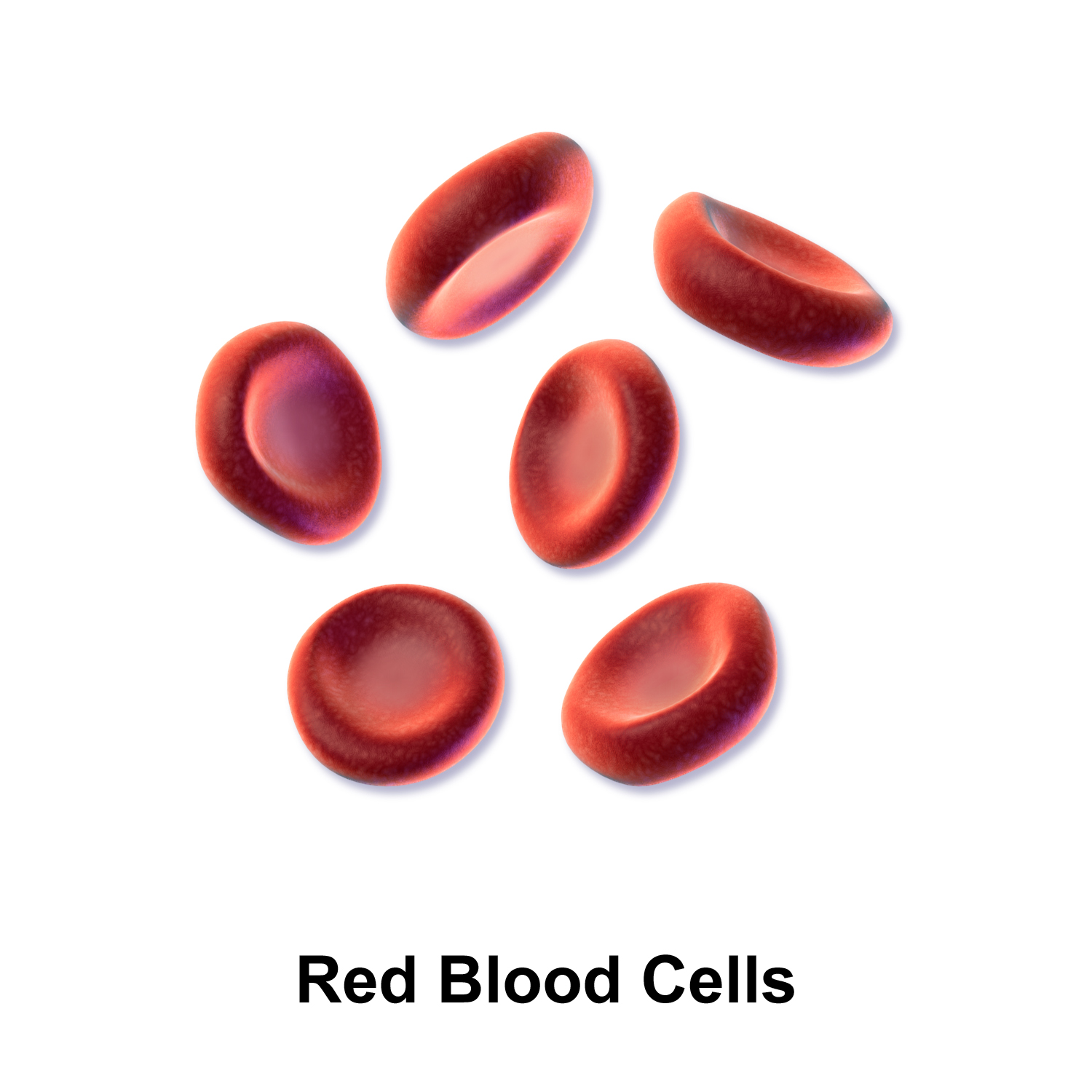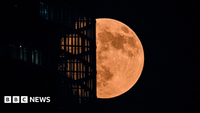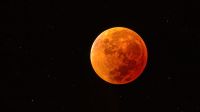Explore web search results related to this domain and discover relevant information.
The colour blood red is a dark shade of the colour red meant to resemble the colour of human blood (which is composed of oxygenated red erythrocytes, white leukocytes, and yellow blood plasma). It is the iron in hemoglobin specifically that gives blood its red colour.
Deoxygenated blood, which circulates closer to the body's surface and which is therefore generally more likely to be seen than oxygenated blood, issues from bodily veins in a dark red state, but quickly oxygenates upon exposure to air, turning a brighter shade of red.This happens more quickly with smaller volumes of blood such as a pinprick and less quickly from cuts or punctures that cause greater blood flows such as a puncture in the basilic vein: all blood collected during a phlebotomy procedure is deoxygenated blood (ie, blackish red in color), and it does not usually have a chance to become oxygenated upon leaving the body.Arterial blood, which is already oxygenated, is also already a brighter shade of red— this is the blood seen from a pulsating neck, arm, or leg wound, and it does not change colour upon exposure to air. The colour "blood red", therefore, covers both these states: the darker deoxygenated colour and the brighter oxygenated one.Also, dried blood often has a darker, rust-coloured quality: all dried blood has been oxygenated and then desiccated, causing the cells within it to die. This blood is often darker than either shade of red that can be seen in fresh blood.


Blood isn't always red—evolution has given rise to a variety of hues.
He found that on average, P. charcoti had 40 percent more hemocyanin in its blood than either O. pallidus or E. moschata. "We really weren't expecting to find this," Oellermann said. Here's another surprise: A variety of animals bleed colors other than red.With so many species remaining to be studied, one thing's for sure: There will be blood (research for many years to come). Follow Carrie Arnold on Twitter. ... Visit the D.C. Museum ... National Geographic InstagramNational Geographic FacebookNational Geographic TwitterNational Geographic YoutubeNational Geographic LinkedinNational Geographic TiktokNational Geographic RedditSociety elites aren't the only blue bloods. Several species of octopus have blue, rather than red, fluid running through their veins.The blue comes from a copper-rich protein called hemocyanin, which carries oxygen from the lungs to the bloodstream and then to the cells of the octopus's body. Hemoglobin, an iron-containing protein found in the blood of other animals—including humans—serves the same oxygen-transporting function but turns blood red.
During the March 2026 total lunar eclipse, the full "Worm Moon" will rise and, later that night, pass into Earth's umbral shadow. As it does, the full moon will dim and gradually turn reddish-orange, which is why it's called a "blood moon." Totality — when the entire lunar surface appears ...
During the March 2026 total lunar eclipse, the full "Worm Moon" will rise and, later that night, pass into Earth's umbral shadow. As it does, the full moon will dim and gradually turn reddish-orange, which is why it's called a "blood moon." Totality — when the entire lunar surface appears reddish-orange — will last 58 minutes.Lunar Eclipses Total lunar eclipse will paint the full moon blood red for over 7 billion skywatchers tonightA total lunar eclipse on March 2-4, 2026, will be visible in North America and will be the last total lunar eclipse anywhere on Earth until New Year's Eve 2028-2029.Lunar Eclipses A blood moon is coming: Here's what you need to know about the total lunar eclipse on Sept.


Skywatchers across the world will witness the first total lunar eclipse in three years. Here’s who will have the best views—and what gives the moon its eerie red tint.
Skywatchers across the world will witness the first total lunar eclipse in three years. Here’s who will have the best views—and what gives the moon its eerie red tint. People gather to watch a “blood moon“ eclipse in Melbourne, Australia, on July 28, 2018.The most striking phase—when the moon takes on a deep orange or red color—earns it the nickname “blood moon.” This happens because sunlight filtering through Earth’s atmosphere scatters shorter wavelengths of light (blues and greens) while allowing longer, red wavelengths to reach the moon.The most dramatic phase—the total eclipse—will last 66 minutes, giving plenty of time to witness the moon’s eerie transformation into a deep red. (Here are eight other must-see night sky events to look forward to in 2025.) The total lunar eclipse will be visible across North and South America, parts of western Europe, Africa, and the Pacific region. For skywatchers in North America, the eclipse will begin late on the night of March 13 and continue into the early hours of March 14, depending on local time zones. Those in western Europe will see the blood moon setting in the west as the eclipse unfolds, while in New Zealand, the fully eclipsed moon will rise in the east just after sunset.For the first time since 2022, skywatchers across North America will see the full moon slip into Earth’s shadow, transforming into a deep reddish hue. The event begins after midnight on March 14 in the eastern U.S. and Canada, while those in the western half of the continent will see it unfold before midnight on March 13.
Red blood cells transport oxygen to your body’s tissues. Red blood cells make up 40% of the blood in your bloodstream.
Blood loss. Your body loses more blood cells than it can produce. Bone marrow disorder: You experience damage to your bone marrow, where red blood cells form (leukemia, lymphoma).Cancer. Certain cancers and chemotherapy treatment for cancer can affect the number of red blood cells your body produces. Medical conditions that affect a high red blood cell count include:Hypoxia. The oxygen level in your blood is low. Carbon monoxide. Smoking increases your chance of exposure to carbon monoxide. Common symptoms of conditions involving red blood cells include:A complete blood count (CBC) test examines how many blood cells (red and white) are in your blood. A medical professional will sample your blood to count how many red blood cells are present. Normal red blood cell counts differ based on the person, but general ranges include:


It’s amazing how much difference a few years can make. Three years ago today, President Joe Biden gave us his ghoulish ‘Soul of the Nation’ rant with a demonic-looking, blood-red backdrop. Biden launched into MAGA as extremists who posed a direct threat to the United States.
Three years ago today: A stark reminder of where we were.Joe Biden stands against the backdrop of blood-red walls and US Marines to threaten Trump supporters as: “An extremism that threatens the very foundation of our Republic.Three years ago today: A stark reminder of where we were. Joe Biden stands against the backdrop of blood-red walls and US Marines to threaten Trump supporters as: “An extremism that threatens the very foundation of our Republic.” They propped up this demented husk of a man as…Reflecting on Biden's divisive 'Soul of the Nation' speech three years later.

Editor's note: The September 2025 total lunar eclipse put on a spectacular show, dazzling stargazers with a mesmerizing display of orbital mechanics that briefly turned the moon blood red as Earth's shadow swept across the lunar disk.
When the moon slipped into our planet's inner shadow, the umbra, on Sept. 7, it underwent a spectacular transformation, as the red light from every sunset and sunrise on Earth fell upon its surface, turning it into a rusty red blood moon.Lunar Eclipses Total lunar eclipse will paint the full moon blood red for over 7 billion skywatchers tonightSee the first photos of September's majestic total lunar eclipse.See the first spectacular images of the Sept. 7-8 blood moon total lunar eclipse.
In September, the American Red Cross reminds people that giving blood now helps support patients the moment they need medical care. Donors of all types, especially those with types O positive and B negative blood, are asked to make ...
Additionally, trauma patients may need blood product transfusions within minutes of entering emergency rooms. Those who give now could help someone in dire moments. ... People coming together to care for one another is the humanitarian spirit shared by our Red Cross community and fans of PEANUTS for the past 75 years.Simply download the American Red Cross Blood Donor App, visit RedCrossBlood.org, call 1-800-RED CROSS (1-800-733-2767) or enable the Blood Donor Skill on any Alexa Echo device to make an appointment or for more information. All blood types are needed to ensure a reliable supply for patients.Blood and platelet donors can save time at their next donation by using RapidPass to complete their pre-donation reading and health history questionnaire online, on the day of their donation, before arriving at the blood drive. To get started, follow the instructions at RedCrossBlood.org/RapidPass or use the Blood Donor App.Another way to support the lifesaving mission of the Red Cross is to become a volunteer blood donor ambassador at Red Cross blood drives. Blood donor ambassadors help greet, check in and thank blood donors to ensure they have a positive donation experience.

Blood red is dark reddish-brown, associated with love and death. Learn more about blood red in this guide.
It’s situated predominantly in the red segment of the color wheel, evoking imagery of fine wines and long-forgotten battles. Blood red is defined by the following color codes and values to ensure consistency across various digital platforms and devices.Red is a color of passion. In UI design, it can be used to make the user feel something, from fear to love to excitement. Cue negative actions or destructive options. Blood red can be used for buttons or icons representing negative actions like “Delete” or “Cancel.” However, make sure there’s a clear confirmation step before the user takes any irreversible action.Chili red (#CD1C18) is a classic spicy red, representing heat, love, and passion. To complement blood red, consider pairing it with:Magenta (#00FFFF) has cool undertones that clash with the warmth of blood red. As the name implies, blood red represents blood.

Foods rich in iron help you maintain healthy red blood cells. Vitamins are also needed to build healthy red blood cells. These include vitamins B-2, B-12, and B-3, found in foods, such as eggs, whole grains, and bananas. Folate also helps.
People with anemia may have red blood cells that have an abnormal shape or that look normal, larger than normal, or smaller than normal. Symptoms of anemia include tiredness, fast heart rate, pale skin, feeling cold, and, in severe cases, heart failure. Children who don't have enough healthy red blood cells grow and develop more slowly than other children.These symptoms show how important red blood cells are to your daily life. ... Iron-deficiency anemia. If you don't have enough iron in your body, your body won't be able to make enough red blood cells. Iron-deficiency anemia is the most common form of anemia.It can also lead to infection or organ damage. Sickle cells die much more quickly than normal blood cells—in about 10 to 20 days instead of 120 days. This causes a shortage of red blood cells. Normocytic anemia. With this type of anemia your red blood cells are a normal shape and size.Red blood cells carry fresh oxygen all over the body.

The second total lunar eclipse of 2025 delivers a long, blood-red moon.
The moon March 2026 total lunar eclipse: Everything you need to know about the next 'blood moon' ... Eclipses Moon blocks satellite views of the sun before lunar eclipse | Space photo of the day for Sept. 9, 2025 ... Solar Eclipses A partial solar eclipse is coming: 1 month until the moon takes a 'bite' out of the sun · Lunar Eclipses Why does the moon turn red during a total lunar eclipse?Editor's note: The September 2025 total lunar eclipse put on a spectacular show, dazzling stargazers with a mesmerizing display of orbital mechanics that briefly turned the moon blood red as Earth's shadow swept across the lunar disk.If you live outside of the viewing area or can't make it outside to view the eclipse live, luckily you can watch the blood moon total lunar eclipse on Sept. 7 with these free livestreams, or right here at Space.com.Lunar Eclipses A blood moon is coming: Here's what you need to know about the total lunar eclipse on Sept.
Red blood cells (RBCs), referred to as erythrocytes (from Ancient Greek erythros 'red' and kytos 'hollow vessel', with -cyte translated as 'cell' in modern usage) in academia and medical publishing, also known as red cells, erythroid cells, and rarely haematids, are the most common type of ...
Red blood cells (RBCs), referred to as erythrocytes (from Ancient Greek erythros 'red' and kytos 'hollow vessel', with -cyte translated as 'cell' in modern usage) in academia and medical publishing, also known as red cells, erythroid cells, and rarely haematids, are the most common type of blood cell and the vertebrate's principal means of delivering oxygen (O2) to the body tissues—via blood flow through the circulatory system.The cytoplasm of a red blood cell is rich in hemoglobin (Hb), an iron-containing biomolecule that can bind oxygen and is responsible for the red color of the cells and the blood. Each human red blood cell contains approximately 270 million hemoglobin molecules.The cell membrane is composed of proteins and lipids, and this structure provides properties essential for physiological cell function such as deformability and stability of the blood cell while traversing the circulatory system and specifically the capillary network. In humans, mature red blood cells are flexible biconcave disks.The cells develop in the bone marrow and circulate for about 100–120 days in the body before their components are recycled by macrophages. Each circulation takes about 60 seconds (one minute). Approximately 84% of the cells in the human body are the 20–30 trillion red blood cells.The vast majority of vertebrates, including mammals and humans, have red blood cells. These erythrocytes are cells present in blood to transport oxygen. The only known vertebrates without red blood cells are the crocodile icefish (family Channichthyidae); they live in very oxygen-rich cold water and transport oxygen freely dissolved in their blood.

Blood Red: Directed by Peter Masterson. With Eric Roberts, Giancarlo Giannini, Dennis Hopper, Burt Young. In 19th-century California, a Sicilian family of able winemakers gets targeted by a corrupt railroad tycoon after they refuse to leave their land.
My review was written in April 1990 after watching the movie on Nelson Entertainment video cassette. "Blood Red", a saga of oppressed Sicilian winegrowers in 19th century California, is an unsuccessful throwback to earlier forms of filmmaking. First-time screen teaming of siblings Eric and Julia Roberts makes this a definite curiosity item.Hopper hires Burt Young (miscast) and his gang of mercenaries to convince Giannini and the other growers to clear out, resulting in violence. Pic ends in boring fashon with a whimper. Ron Cutler's utterly predictable script is mainly to blame for draining "Blood Red" of interest.The latter facet begins to zero in a little more on the truth, I think, for while nothing about this is necessarily outright bad, small weaknesses rear their head all throughout the length, and at least in part it stems from the proceedings being shortchanged. 'Blood red' tells a compelling story, but it feels like only a fraction of the whole story being regrettably compressed.Frankly, I would very much like to see another filmmaker take up Cutler's screenplay, and expand upon it to give it the treatment it deserves. The sad fact remains that even at its best 1989's 'Blood red' is a shade of the film it might have been, and it's hard to speak of it as any more than a soft recommendation.

Red blood cells are one of the components of blood. They carry oxygen from our lungs to the rest of the body.
A low red blood cell count, known as anemia, can cause fatigue, shortness of breath, dizziness and other symptoms. If untreated, anemia can lead to serious complications. In many cases, anemia occurs when we don’t eat a nutrient rich diet; choosing foods that are rich in iron and other vitamins and minerals can help raise the red blood cell count.They can also be used to treat blood disorders such as sickle cell disease. Red blood cells are prepared from whole blood by removing the plasma (the liquid portion of the blood). Sometimes this is done after a person donates a pint of whole blood, resulting in multiple components (red cells, plasma and platelets) that can be given to different patients.Learn more about the different components that can be obtained from a whole blood donation. Other times, it is done during the donation itself, using a process called apheresis. In this case, only the red cells are retained and the patient’s plasma and platelets are returned to them.Some donors say that this leaves them feeling more hydrated than giving a whole blood donation. Red cells have a shelf life of up to 42 days, depending on the type of anticoagulant used when they are stored.


Sky-watchers around the world have been witnessing a striking Blood Moon - a phenomenon that happens when the Moon passes through the Earth's shadow, taking on a deep red hue.
During a total lunar eclipse the Moon passes through the Earth's shadow, taking on a deep red hue.

This rare astronomical event, often called a "Blood Moon," is visible from all parts of India, delighting stargazers and families across the country.
The 'Blood Moon' is seen during a total lunar eclipse in Beijing on November 8, 2022. (Photo by Jade Gao / AFP) ... A spectacular total lunar eclipse will cast the Moon in a deep red hue during the longest period of totality witnessed in recent years on September 7, 2025.This rare astronomical event, often called a "Blood Moon," is visible from all parts of India, delighting stargazers and families across the country. ... As the Earth moves directly between the Sun and the Moon, it blocks sunlight from reaching the lunar surface, allowing only red-filtered rays to bend through Earth's atmosphere and bathe the Moon in an eerie, coppery light.The deep red colour arises because air molecules scatter shorter, blue wavelengths of light and let longer, red wavelengths pass through, creating the Blood Moon effect that has fascinated cultures for millennia.The Blood Moon’s lasting visibility and dramatic transformation promise a visual and educational experience. The eclipse will be visible across India from start to finish. According to astronomers, the total phase, when the Moon appears completely red, will begin late in the evening and continue past midnight.
This incredible composite photo shows how the moon's colour changed as it traversed Earth's shadow during an eclipse earlier this week
This composite of photos taken above Tokyo shows, from top left to bottom right, what happened as the moon moved into and out of Earth’s shadow. Its red colour occurred when the only sunlight to reach it was that which had passed through our planet’s atmosphere, which scatters all but the red wavelengths.


This precious fluid fights infection, delivers nutrients and gases to organs, and ferries away waste products. But what many of us picture as blood—red and full of iron, for instance—differs depending on the species.
Coates says it likely came about because vertebrates have more complex respiratory systems than do simple organisms. Indeed, most mammal, fish, reptile, amphibian, and bird blood is red because of hemoglobin, whose protein is made of hemes, or iron-containing molecules that fuse with oxygen.To avoid parasites, prehensile green tree skinks of New Guinea may have what amounts to dirty blood. A constant buildup of a bile pigment called biliverdin, the waste product of broken-down red blood cells, causes the reptiles’ blood, bones, mouths, tongues, and other body parts to be lime green.A relative of theirs, the aptly named bloody-nosed beetle, spews red hemolymph, which looks like blood, from its mouth for the same purpose.From milky blue to lime green, organisms have evolved different types of blood—and ways to move oxygen around the body.

Every year or so, the moon turns blood red due to it passing into Earth's shadow and receiving the light of every dusk and dawn at the same time.
What Is A Blood Moon? Here's What Causes This Lunar Anomaly ... By Gaurav Shukla Sept. 5, 2025 12:17 pm EST ... Earth's natural satellite, the moon, is typically pale gray, white, or yellowish; however, every once in a while, it appears to change its color to red or copper.This phenomenon is called a blood moon, and it only occurs during a total lunar eclipse, which is why the terms "total lunar eclipse" and "blood moon" are sometimes used interchangeably. As you might expect, the moon doesn't actually turn red during a blood moon; it only looks reddish in color from our perspective on Earth, and there is a good reason for that.As the sunlight travels through our atmosphere, much of the shorter wavelengths, which are responsible for blues and violets, are scattered to a greater extent than the longer wavelengths, which are responsible for the reds and oranges. The longer wavelengths, which are not scattered, are reflected back to the Earth by the moon's surface, giving it the reddish glow and causing the blood moon.The intensity of the red color can increase if there is more dust or clouds in Earth's atmosphere. Notably, the term "blood moon" is not a scientifically recognized term.

ELKO — A lunar eclipse overnight Sunday and Monday provided a surreal glimpse into the cosmos when the Earth's shadow turned the planet's only natural satellite blood red.
It's similar to the spectral magic at sunrise and sunset when the Sun appears redder than other parts of the day. It was the second total lunar eclipse of 2025. A partial solar eclipse on Sept. 21 won't be visible in the United States, but those in the southern hemisphere, especially, New Zealand, Antarctica, Australia and several South Pacific island groups should be able to experience the eclipse. The blood moon, seen here over Elko on Monday, Sept.The blood moon, seen here over Elko on Monday, Sept. 8, 2025, is created by red light waves bending around Earth's atmosphere and projecting on the lunar surface.The blood moon created by a total lunar eclipse on Monday night, Sept. 8, 2025, is visible over Elko in the night sky.








